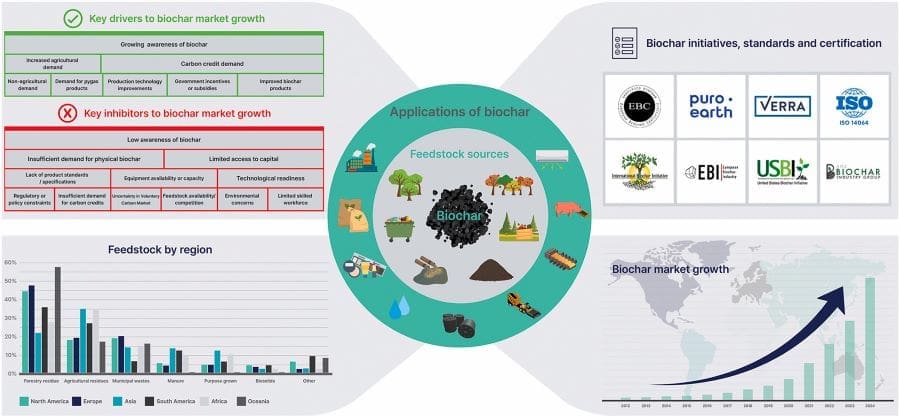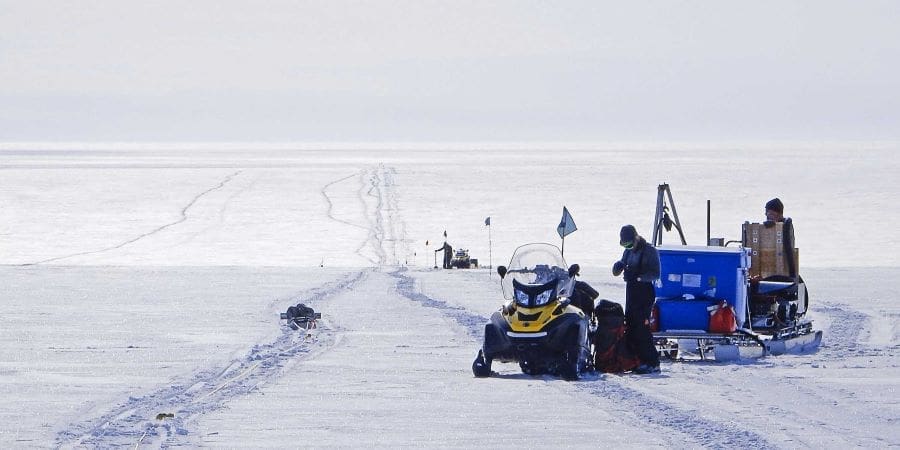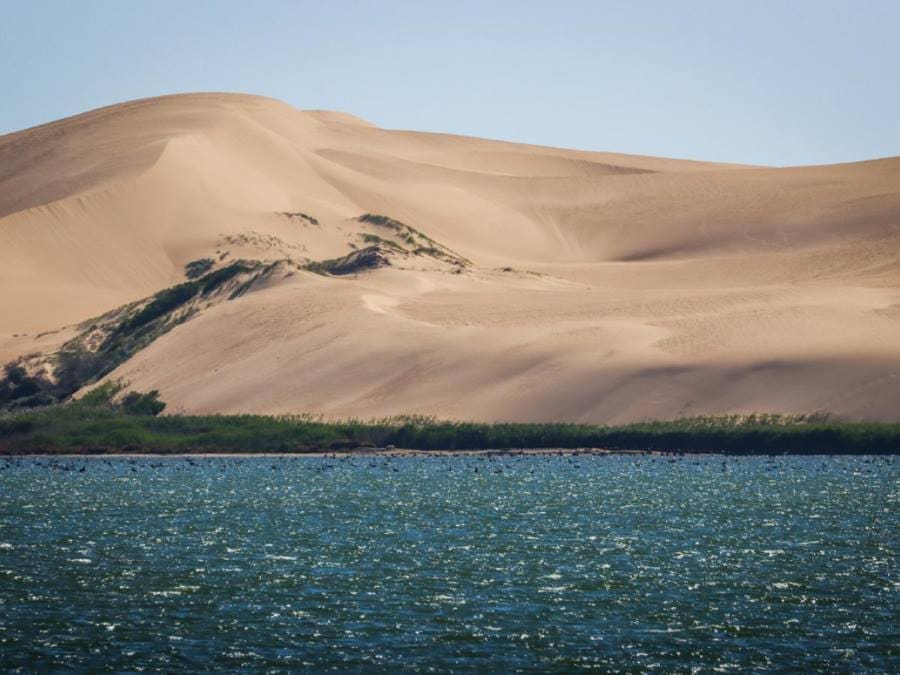Explore the latest insights from top science journals in the Muser Press daily roundup (May 14, 2025), featuring impactful research on climate change challenges.
In brief:
Landmark study charts biochar’s global potential in ESG and climate strategy
In this recent study led by Prof. Yong Sik Ok — President of the International ESG Association (IESGA), President of the International Society of Trace Element Biogeochemistry (ISTEB), Director of the Korea Biochar Research Center (KBRC), Full Professor at Korea University — the comprehensive analysis lays the groundwork for the large-scale adoption and commercialization of biochar as a carbon-negative technology.
This is aligned with corporate ESG strategies, the United Nations (UN) Sustainable Development Goals (SDGs), and global initiatives such as Task Force on Climate-related Financial Disclosures (TCFD) and voluntary carbon markets. The findings were published online and will appear in vol. 217 of Renewable and Sustainable Energy Reviews in July 2025. This study marks another benchmark in ESG research by Prof. Ok’s team.

Traditionally applied as a soil amendment, biochar is now gaining momentum across a range of industries—including renewable energy, construction, textiles and waste management. The study explores the rapidly evolving market potential of biochar and its scalability as a carbon capture, utilization, and storage (CCUS) solution.
“Biochar presents one of the most promising carbon-negative technologies available today. To meet ESG and sustainability commitments, we must move beyond laboratory-scale innovation and advance toward full-scale commercial deployment — supported by smart governance and international collaboration,” remarked Prof. Ok.
The study focuses on global market dynamics while stressing the urgency of coordinated policy reforms. Critically, it provides a strategic blueprint for industry players, including major firms like Microsoft, for integrating biochar into their climate portfolios and ESG strategies, aligning with TCFD disclosures and Net Zero pathways.
For instance, Microsoft has signed a six-year carbon credit offtake agreement with “The Next 150,” a climate solutions provider, to purchase 95,000 tons of carbon removal credits sourced from a newly established biochar production plant in Mexico. Similarly, Royal Dutch Shell, a global energy and petrochemicals company, is incorporating biochar into its soil enhancement initiatives, complementing their hydrolysis and hydro-conversion technologies.
“At KBRC, with support from IESGA, our mission is to transform biochar from a promising research concept into a cornerstone of industrial sustainability. Our latest study advances that goal by synthesizing evidence across economics, policy, and technology, while offering actionable guidance for governments, industry leaders, and research institutions,” concludes Prof. Ok.
***
References
Title of original paper: Active Learning-Based Guided Synthesis of Engineered Biochar for CO2 Capture
Journal: Environmental Science & Technology
DOI: 10.1021/acs.est.3c10922
Author(s) Affiliation: Korea University
Title of original paper: Waste-derived biochar for water pollution control and sustainable development
Journal: Nature Reviews Earth & Environment
DOI: 10.1038/s43017-022-00306-8
Author(s) Affiliation: Korea University
Title of original paper: Prediction of soil heavy metal immobilization by biochar using machine learning
Journal: Environmental Science & Technology
DOI: 10.1021/acs.est.1c08302
Author(s) Affiliation: Korea University
Title of original paper: Applied machine learning for prediction of CO2 adsorption on biomass waste-derived porous carbons
Journal: Environmental Science & Technology
DOI: 10.1021/acs.est.1c01849
Author(s) Affiliation: Korea University
Title of original paper: Sustainable remediation and redevelopment of brownfield sites
Journal: Nature Reviews Earth & Environment
DOI: 10.1038/s43017-023-00404-1
Author(s) Affiliation: Korea University
Journal Reference:
Sachini Supunsala Senadheera, Piumi Amasha Withana, Siming You, Daniel C.W. Tsang, Sung Yeon Hwang, Yong Sik Ok, ‘Sustainable biochar: Market development and commercialization to achieve ESG goals’, Renewable and Sustainable Energy Reviews 217, 115744 (2025). DOI: 10.1016/j.rser.2025.115744
Article Source:
Press Release/Material by Cactus Communications
The Antarctic water puzzle – how flooding contributes to ice melt
In the autumn of 2021, an international team of researchers from New Zealand’s Antarctic Science Platform set off towards the South Pole. Their destination was the Ross Ice Shelf in West Antarctica, a floating ice sheet about ten times the size of Switzerland. New Zealand has been operating the Scott research station on the coast since 1957. From there, the expedition team continued south. Two weeks and 1,200 kilometres later, they reached their destination on the Kamb Ice Stream, a glacier, 350 km long, 100 km wide and many hundreds of metres deep that runs from the interior of Antarctica towards the sea, meeting the Ross Ice Shelf on the coast.
Hot water borehole through the Antarctic ice
At this remote location on the permanent ice, the support team built a temporary research station with its own airstrip and tent accommodation for 26 people. The scientists used the favourable conditions of the Antarctic summer for their research work, with temperatures of -10°C, light winds and 24-hour daylight. Drilling 500 metres through the ice sheet to the Antarctic mainland beneath, they encountered water and sedimentary rock. For the hot water drilling, they used a high-pressure nozzle and water at 80°C. With a diameter of 30 cm, the borehole was large enough to lower a camera and various measuring equipment down into the depths to explore the conditions at the base of the ice flow.

“We struck water at the end of the borehole and with the help of our camera, we even discovered a school of lobster-like creatures, 400 kilometres from the open ocean,” reports expedition leader Huw Horgan who has been working as a researcher at ETH Zurich and the Swiss Federal Institute for Forest, Snow and Landscape Research WSL under Professor Daniel Farinotti for two years.
The borehole is a scientific milestone: researchers have long suspected that water flows from under the ice sheet. The water exists due to geothermal heat and other factors, and scientists had already discovered several hundred lakes under the ice caps of West and East Antarctica using satellites. But the watercourses in the depths of the ice caps still hold many secrets. The borehole through the Kamb Ice Stream is the first ever successful attempt to observe such a watercourse meeting the sub-ice-shelf ocean cavity up close.
Veritable floods beneath the ice
The researchers used their measuring equipment to analyse the properties of the watercourse, including the temperature, salinity and sediment content. Using an echo sounder, they were able to estimate the cross-section of the water-carrying ice channel to be around 100 by 200 metres. The subglacial flow should not be thought of as a fast-flowing river. It is actually a reasonably calm body of water, and most of the water comes from the sea. Only a small amount – less than one cubic metre per second – is fresh water, i.e. water that flows towards the sea below the Kamb Ice Stream.
“This amount of water is much smaller than what the existing models had predicted,” notes Huw Horgan, summarising a key finding of the study.
No less important for the research team is a second result: the subglacial watercourse does not flow continuously, instead its course fluctuates greatly over time. “We suspect that the water comes from subglacial lakes upstream. These lakes fill and empty in certain cycles. When they empty, a flood of water rushes towards the sea,” says Horgan. The researchers proved that such flood events do in fact occur by analysing sediment samples from the ground beneath the ice stream. According to these findings, large flood events occur approximately every ten years. In addition, there may be smaller flood events that the researchers cannot prove using current methods.
Important foundations for climate research
The study by the international team of researchers is a stepping stone towards better understanding the watercourses beneath the Antarctic ice sheet. At the same time, it will help the consequences of global warming to be assessed more reliably in the coming decades. The melting processes in the Antarctic ice shelf are an important cause of the anticipated rise in sea levels. This is because the Ross Ice Shelf and other ice shelf formations act as a barrier, holding back the ice streams on the Antarctic mainland and preventing them from melting as they flow into the sea.
“The subglacial watercourses play a central role in the melting of the ice shelf,” emphasises Huw Horgan. “Our findings are therefore a prerequisite for developing new models that describe the melting of the ice shelf and predict sea level rise even more accurately.”
Consequences of global warming
The changes in the ice cover at the Earth’s South Pole remain a key issue in global climate research. Polar researcher Horgan will return to the Antarctic in the southern summer of 2025/2026. During that expedition, the research team hope to collect data that documents the long-term behaviour of the West Antarctic ice sheet. In particular, the focus will be on warmer periods, such as those that the Earth will experience in the coming decades and centuries.
Journal Reference:
Horgan, H.J., Stewart, C., Stevens, C. et al., ‘A West Antarctic grounding-zone environment shaped by episodic water flow’, Nature Geoscience 18, 389–395 (2025). DOI: 10.1038/s41561-025-01687-3
Article Source:
Press Release/Material by Benedikt Vogel | ETH Zurich
Climate change is turning coastal lagoons into ‘salty soup’
Coastal lagoons are critical ecosystems that provide essential habitats and ecosystem services, including carbon sequestration, nutrient cycling, and fisheries support.
“Under normal conditions, lagoons act as nurseries for fish and crustaceans, they are internationally important feeding grounds for migratory birds, and they protect coasts from storm surges,” says the University’s Dr Chris Keneally.
“Their microbial makeup is what makes this happen, recycling nutrients and fostering this high productivity, allowing diverse plant and animal life to flourish.
“However, a single hot, dry summer, like the one we have recently experienced, can completely shift this important habitat into a salty, green soup, leading to the microbes becoming less diverse and those that are salt-tolerant becoming more dominant.

“Key processes, such as nitrification, de-nitrification, and carbon cycling are then disrupted, altering nutrient retention, organic matter decomposition, and greenhouse gas emissions.”
The trend of hypersalinity in coastal lagoons is global, occurring most often in arid and semi-arid coastal lagoons, such as those in Australia, the Mediterranean and the Persian Gulf. The phenomenon has accelerated in Australia over the last 40 years.
“The rise in salinity can be attributed to elevated temperatures, enhanced evaporation, reduced rain and freshwater inputs, and rising sea levels,” says Dr Keneally, whose recent study was published in Earth-Science Reviews.
“Human factors such as upstream water diversions, urbanisation and development, and groundwater depletion also reduce freshwater inflow to coastal lagoons.
“We can mitigate the impacts of these activities by restoring environmental flows. Allocating water for the environment can maintain lagoon flushing, and nutrient runoff can be reduced by upgrading wastewater plants, re-establishing wetlands, and increasing efforts to retain nutrients in our agricultural lands throughout catchments worldwide.
“To buffer the effects of drought or sea‑level rise, we could also re-open closed tidal inlets to improve mixing, or improving salt tolerant vegetation coverage to trap sediment and slow evaporation.”
A lagoon can bounce back surprisingly fast when appropriately flushed. After the record 2022 Murray–Darling floods, South Australia’s Coorong Lagoon’s microbiome shifted back toward its healthier, more diverse state within months, demonstrating that timely freshwater inputs can rapidly reverse ‘salty soup’ conditions.
Addressing high salinity and nutrient pollution in lagoons benefits the ecosystems they serve while mitigating human health impacts.
“Fish kills hurt local fisheries, algae blooms may produce toxins or airborne irritants, and lost seagrass can weaken coastal flood protection,” says Dr Keneally.
“Emerging research also suggests degradation can make these ecosystems a source of potent greenhouse emissions, adding to climate impacts felt well beyond the shoreline.”
Journal Reference:
Christopher Keneally, Virginie Gaget, Daniel Chilton, Stephen P. Kidd, Luke Mosley, David T. Welsh, Yongqiang Zhou, Lei Zhou, Justin Brookes, ‘Microbial ecology in hypersaline coastal lagoons: A model for climate-induced coastal salinisation and eutrophication’, Earth-Science Reviews 266, 105150 (2025). DOI: 10.1016/j.earscirev.2025.105150
Article Source:
Press Release/Material by Johnny von Einem | University of Adelaide
Featured image credit: Gerd Altmann | Pixabay




